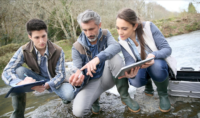Sculpting the musculature of the lower leg
Human anatomy is often taught using a systems approach–skeletal system, nervous system, digestive system, muscles, and so forth. In a living organism, all those systems seamlessly interact, but finding student activities that integrate body systems can be a frustrating task.
This activity integrates the skeletal system with musculature. Working in pairs or individually, students sculpt human lower leg muscles and attach them to the correct lower leg bone with connective tissue. The activity requires that students use the scientific and engineering practices of developing and using models and using mathematics and computational thinking as they build a scaled model of a human leg from the knee to the foot.
College and advanced high school students should be able to complete this activity in about 60—75 minutes.
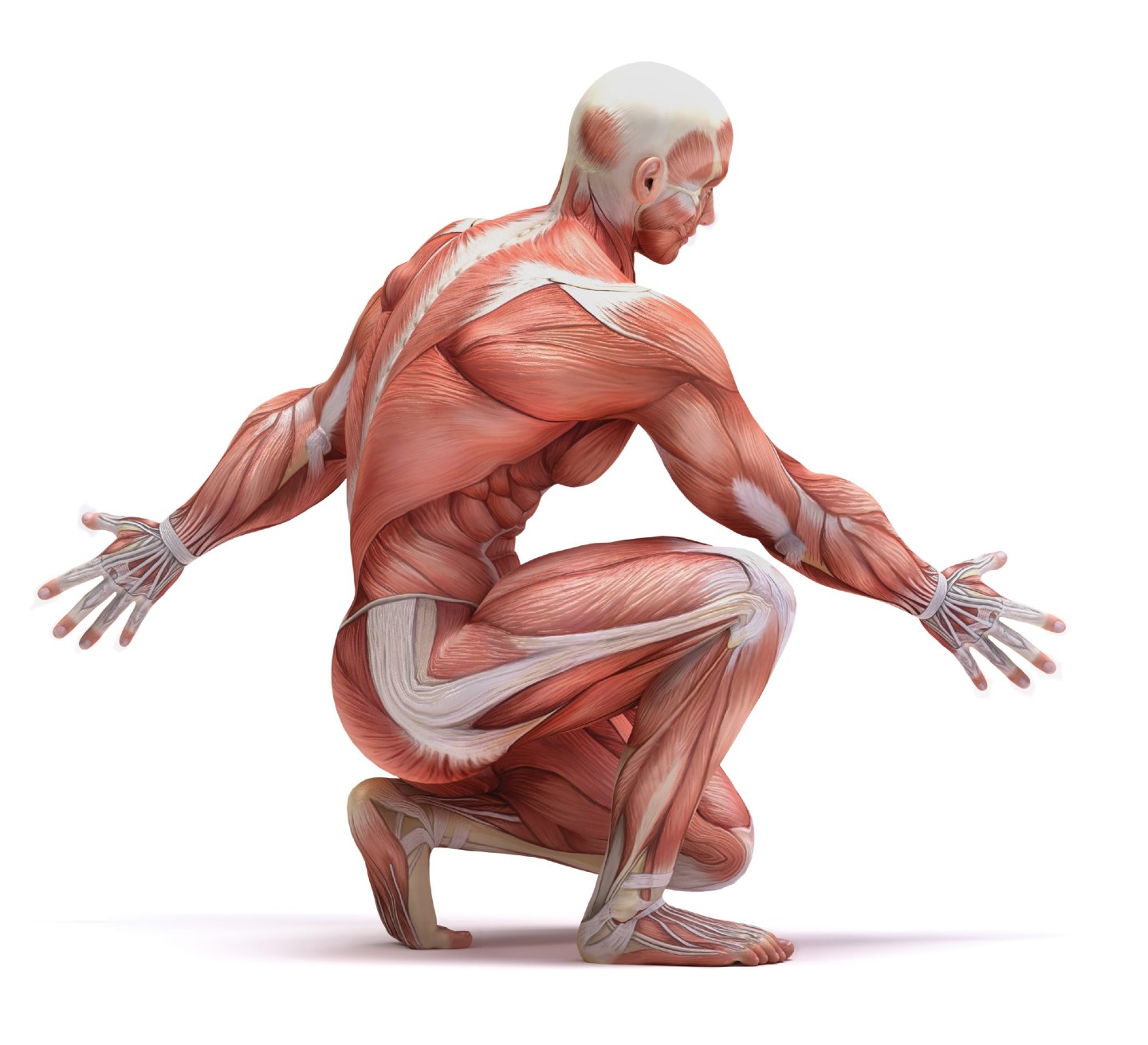
Muscular System
Muscular System HUMAN BODY SYSTEMS Introduce Build Review HUMAN BODY SYSTEMS Introduce Build Review Introduce Muscular System Flex and extend,
Structure of the Human Leg: Bones and Muscles
Essential Question: What is the structure of the human leg?
Materials (per student pair)
- White Craft Paper
- Human Anatomy Skeleton Model
- 2 Sticks White Non-Hardening Plastilina Clay
- 4 Sticks Terra-Cotta Non-Hardening Plastilina Clay
- 2 Clay Sculpting Tools
Procedure
- Your lab partner and you will each work on the lower section of a leg, from the knee to the foot. One of you will work on the right leg while the other works on the left leg. Your teacher may instruct you to remove the legs from the rest of the skeleton.
- The terra-cotta clay represents muscle, and the white clay represents tendons (connective tissue).
- Origin is where the muscle begins, and insertion is where the muscle ends. A muscle connects to a bone via a tendon.
- Review the names of the leg bones, or have a diagram available.
- Using the terra-cotta clay and the sculpting tool, construct the first muscle as described below, making it fit the size of the bone. Using the white clay and sculpting tool, attach the tendons as described. Skeletal muscle has a fibrous appearance, so use the sculpting tool to depict the texture of the muscle. Make sure the muscle and tendons are securely attached to the bones. (See muscle list below)
- After completing your model, explain the musculature you constructed and compare it to the one your partner constructed. Make any changes or improvements needed.
- You will add sections of muscles as instruction progresses, so carefully store your model in a secure location.
Muscles
a. Flexor digitorum longus–thin at the top, origin on posterior surface of body of tibia; insertion on plantar surface-base of distal phalanges 2—5
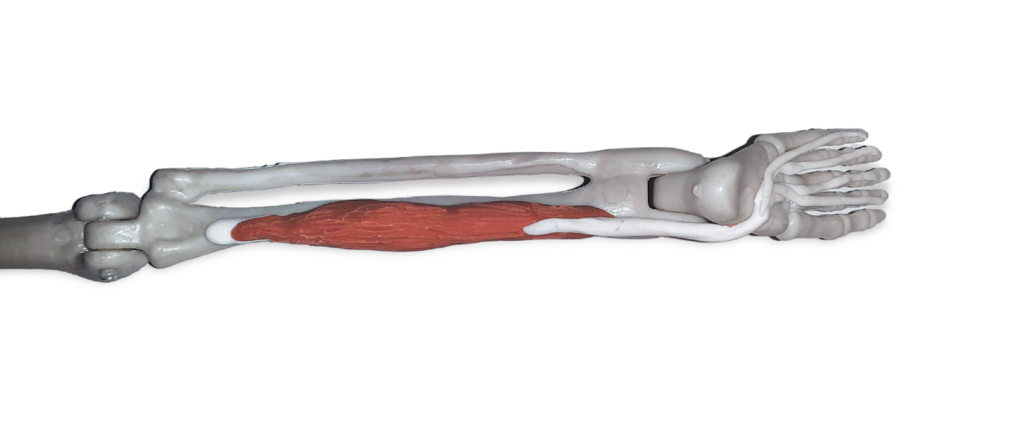
b. Tibialis posterior–origin on tibia and fibula; insertion on navicular and median cuneiform bone
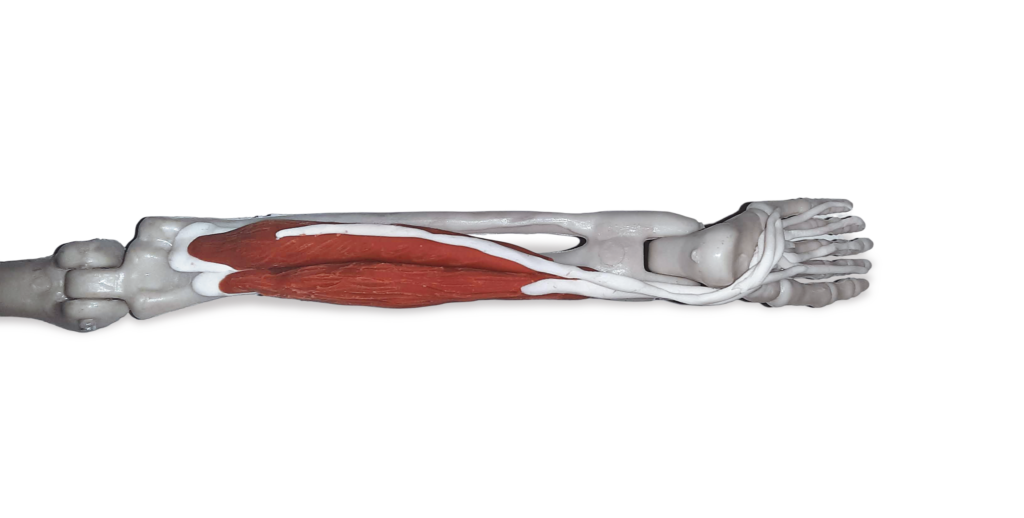
c. Flexor hallucis longus–origin about halfway down fibula; insertion on distal phalanx of hallux (big toe)

d. Fibularis brevis–origin halfway down fibula, below flexor hallucis longus; insertion on fifth metatarsal
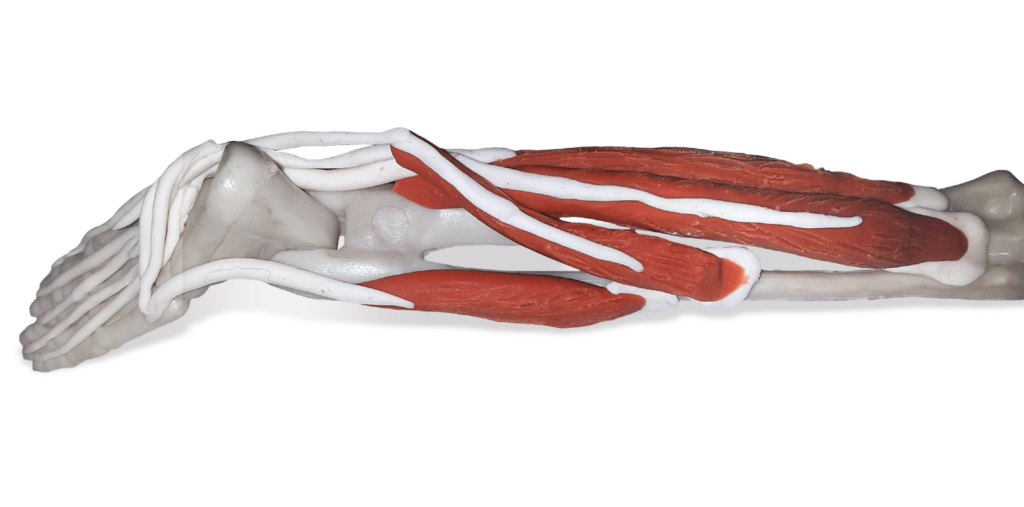
e. Fibularis longus–origin on head and upper two-thirds of lateral surface of fibula; insertion on lateral side of base of first metatarsal and lateral side of medial cuneiform
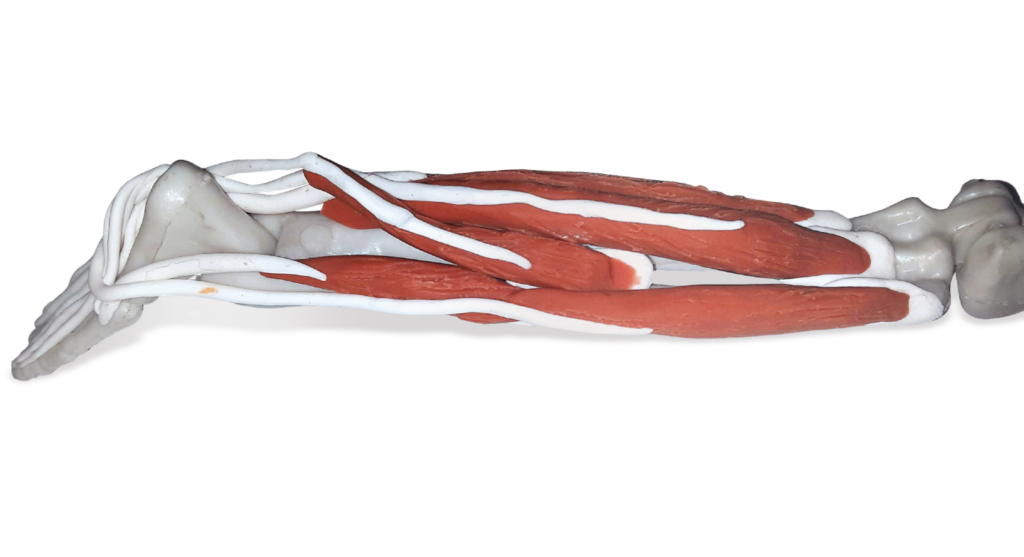
f. Soleus–origin on posterior head of fibula; insertion on calcaneus (heel bone), wide, covers back of leg
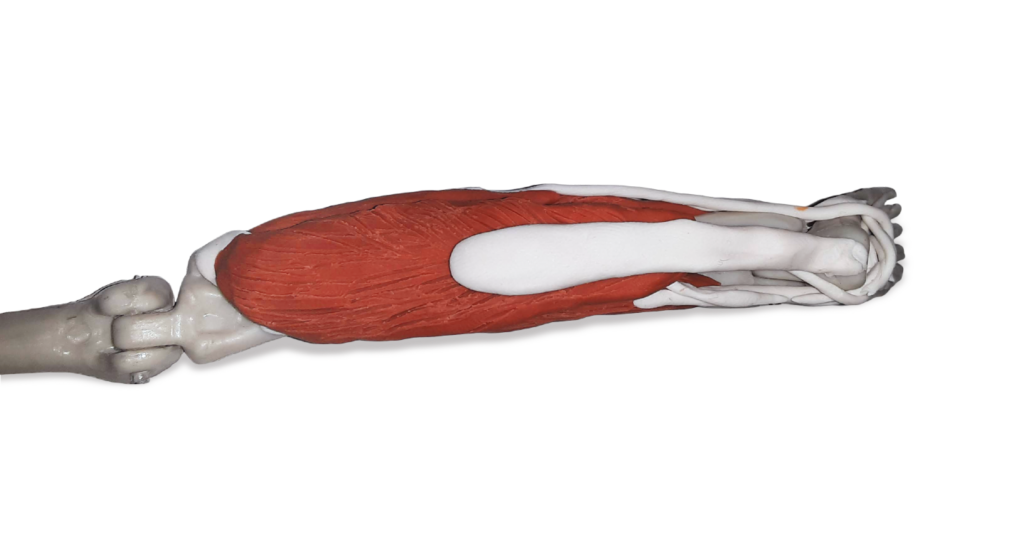
g. Popliteus–origin lateral epicondyle of femur; insertion on medial tibia
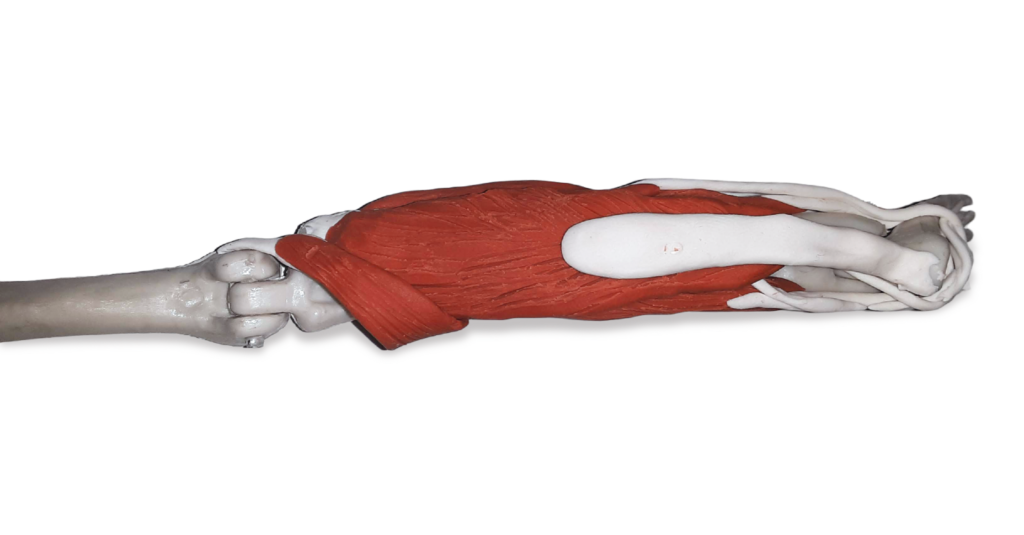
h. Plantaris–origin on lateral condyle of femur, above popliteus; insertion on medial calcaneus
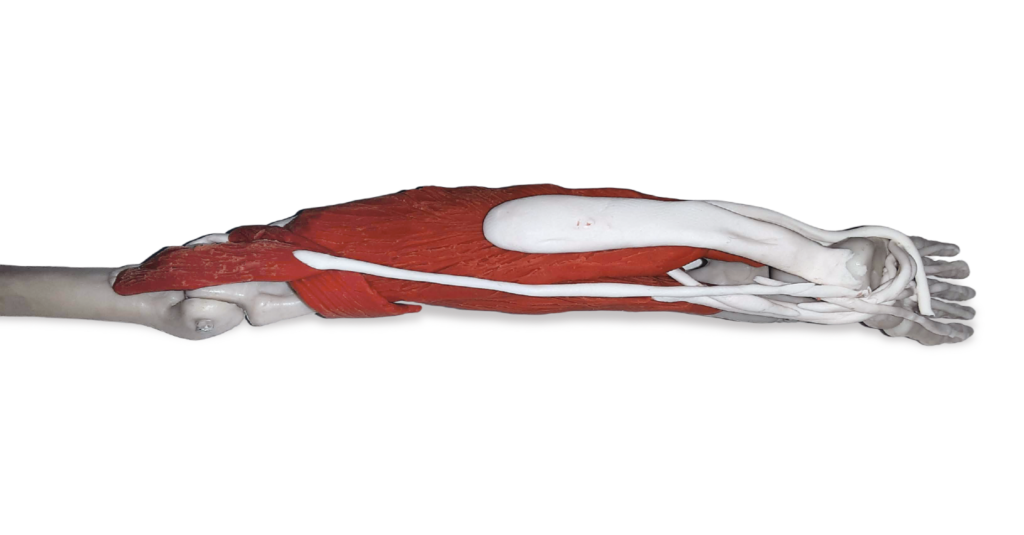
i. Gastrocnemius–origin on the two heads, lateral and medial condyle of femur; insertion on calcaneus
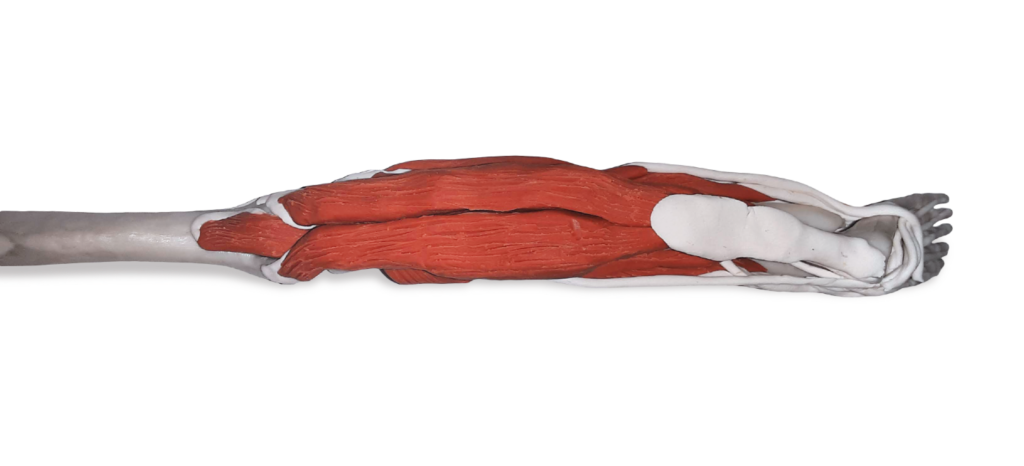
Benefits of Anatomical Modeling
Assessment of student learning is one benefit of creating and explaining models. You can check for understanding over a variety of concepts. Understanding includes correct identification of bones, size and placement of muscles, attachment of tendons, and proportionality of muscle to bone to tendons.
Other benefits of creating models include:
- A completed model serves as a study aid that students can return to time and again.
- Model construction uses a kinesthetic approach to learning, a methodology often overlooked.
- Modeling also gives students ownership of their learning since the detail and accuracy of their models directly impacts their learning.
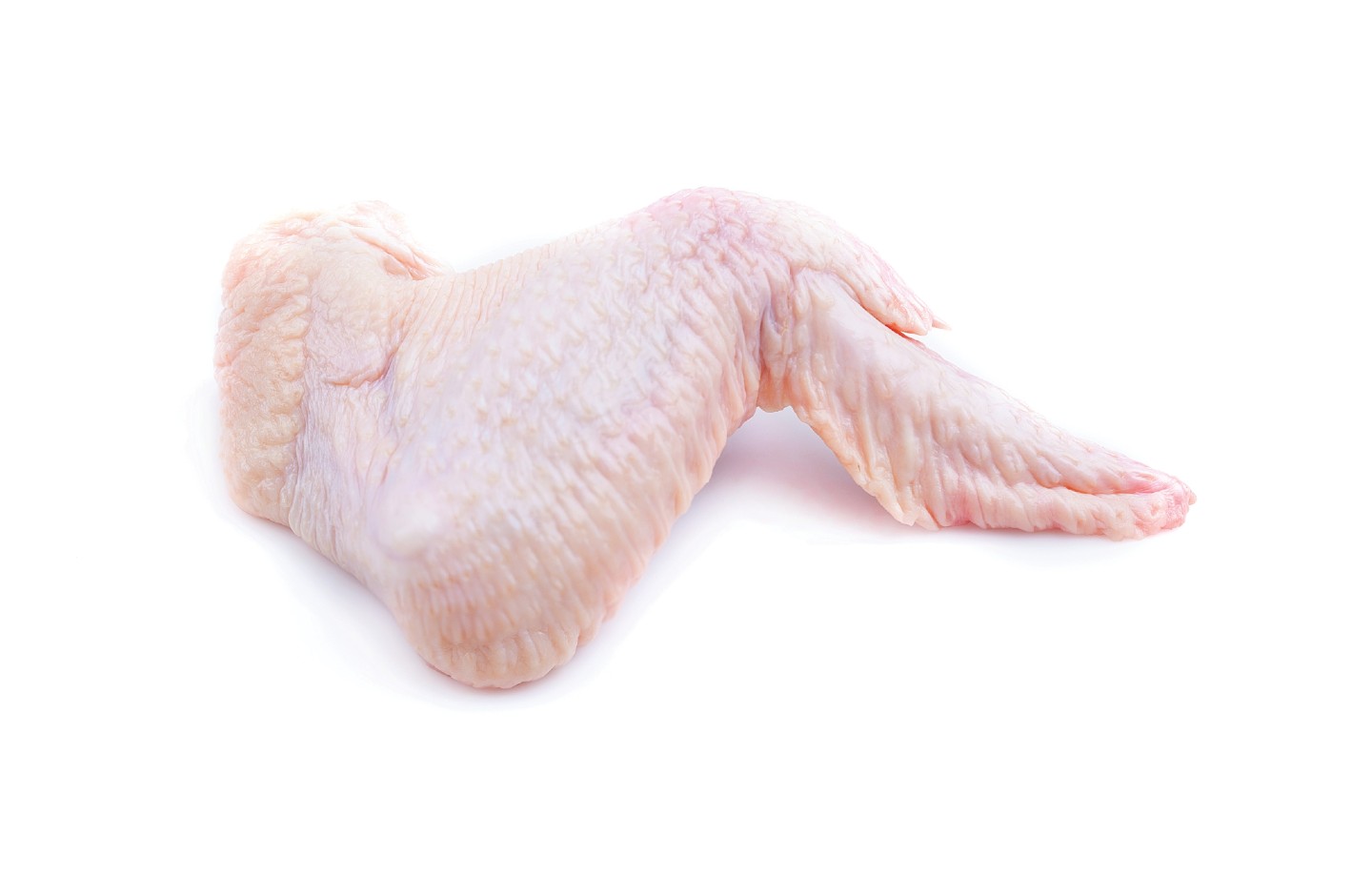
Chicken Wing Musculature
Explore the structures and functions of muscle tissue Essential question What are the structures and functions of muscle tissue? Objectives
Extension Activities
An additional anatomical modeling activity is sculpting the human heart. Cardiac muscle, arteries, veins, and valves are modeled so students can trace the flow of blood through the heart in three dimensions instead of two.
The ultimate anatomical modeling lesson is dissection. There are many reasons to include dissections to help achieve your instructional goals, one of which is the artifacts students produce as a result of examining a specimen in detail. With dissections, the entire organism with systems and individual organs is ready for inspection–structure and function become visible, the connections between body systems are immediately apparent, and organization within the specimen is evident.
For help selecting a specimen to dissect, see our dissection buying guide and additional online dissection resources.




